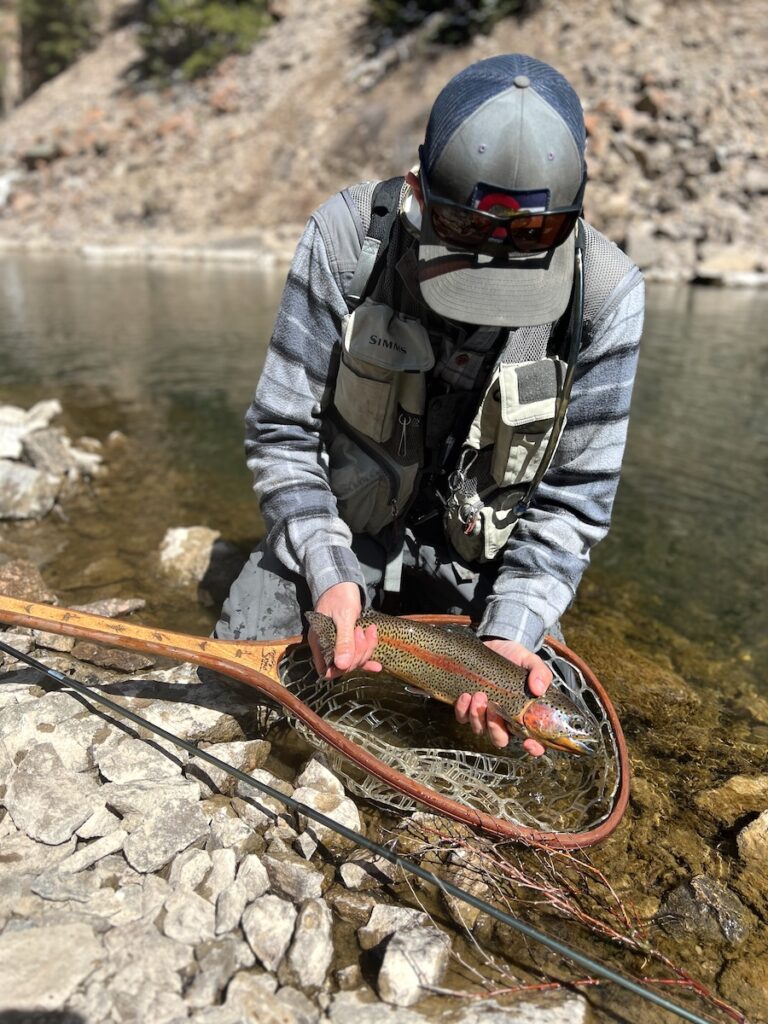If you’re looking to extend your fishing season through the colder months, tailwaters are where it’s at! Unlike freestone rivers, which often slow down as temperatures drop, tailwater fisheries provide a more stable, fish-friendly environment throughout winter. Let’s dive into what makes tailwaters such a great choice for cold-weather fly fishing and a few fly patterns to help you get the most out of it.
What is a Tailwater?
Tailwaters are sections of rivers that flow from the bottom of dams, creating a unique environment where water temperatures remain relatively stable year-round. While freestone rivers might freeze over or have inconsistent flows in the winter, tailwaters tend to hold a steady temperature, often in the 40-50°F range, creating an ideal habitat for trout during the colder months.
Why Tailwaters are Great for Winter Fishing
-
Stable Water Temperature
The biggest advantage of tailwaters is that water is drawn from the bottom of reservoirs, where it’s insulated from the surface temperature. This creates a consistent, slightly warmer water flow that keeps trout active even when the air is freezing.
-
Abundant Food Sources
Tailwaters are nutrient-rich environments where bugs can thrive year-round, especially midges and other cold-tolerant insects. Depending on your location, mysis shrimp can be abundant. These food sources keep trout feeding consistently, making them more willing to take your fly even when it’s chilly out.
-
Fewer Crowds
Winter fly fishing has a secret bonus: solitude. Colder months tend to keep most anglers indoors, so if you’re up for bundling up, you can enjoy having more space to yourself. With fewer people on the water, you’ll also have a better shot at catching larger, less pressured fish.
-
Clear, Manageable Water Levels
Since tailwaters are controlled by dam releases, water levels and clarity tend to be more consistent than in freestone rivers. Winter conditions mean less runoff, so you’re likely to encounter lower, clearer water that can help you spot fish and get more precise presentations.

Common Winter Hatches on Tailwaters
While winter hatches aren’t as intense as spring or summer, tailwaters still produce reliable insect activity that you can key in on. Here are the main winter hatches you’ll find and some fly patterns to match them:
-
Midges
Winter tailwaters are midge central! These tiny insects are active all winter and provide a steady food source for trout. Midges hatch throughout the day, especially during warmer hours, and can trigger feeding frenzies.- Fly Patterns: Zebra Midge (sizes 18-24), Griffith’s Gnat, WD-40
-
Blue-Winged Olives (BWOs)
While it may surprise you, blue-winged olives can hatch on warmer winter days, especially in overcast weather. These small mayflies are usually present in the afternoons and can bring trout to the surface.- Fly Patterns: Parachute BWO (sizes 18-22), RS2, Sparkle Dun
-
Winter Stoneflies
In late winter, you might spot tiny black winter stoneflies crawling along the snow-covered banks. Although they’re not as prolific as midges, they’re a great food source for trout.- Fly Patterns: Black Stonefly Nymph, Little Black Stone, Micro Stone
Other sources
While not a hatch, mysis shrimp are a type of freshwater shrimp that thrive in nutrient-rich waters and are often introduced into reservoirs as a food source for fish. These tiny crusteaceons get flushed through dam outflows and become available to trout downstream. Trout absolutely love them because they’re packed with protein, making mysis shrimp an incredible source of nutrition. Because they’re white or translucent, they’re easy for anglers to imitate with simple patterns, often tied with white or pearl materials.
Top Fly Patterns for Winter Tailwater Fishing
Here are a few fly patterns that should be in every winter angler’s box:
- Zebra Midge: This is a go-to fly for tailwater midge hatches. A small, simple pattern, the Zebra Midge mimics midge pupae and is highly effective in cold conditions.
- WD-40: Originally designed as a BWO emerger, the WD-40 is an excellent winter fly that imitates small insects like midges and baetis, especially in slower tailwater currents.
- RS2: This emerger pattern mimics BWOs and other small mayflies, making it an ideal choice for winter tailwater hatches.
- Griffith’s Gnat: This dry fly imitates clusters of mating midges and works well when trout are sipping on the surface during midge hatches.
- San Juan Worm: With a bit of color and motion, the San Juan Worm is a reliable fly year-round and works especially well when flows are increased by dam releases.
- Candy Cane Mysis Shrimp: Crafted by Umpqua signature tier Dennis Miller, stands out as a must-have pattern. Boasting a thin, realistic profile and a distinctive red wrap, this pattern has proven its effectiveness on the water.

